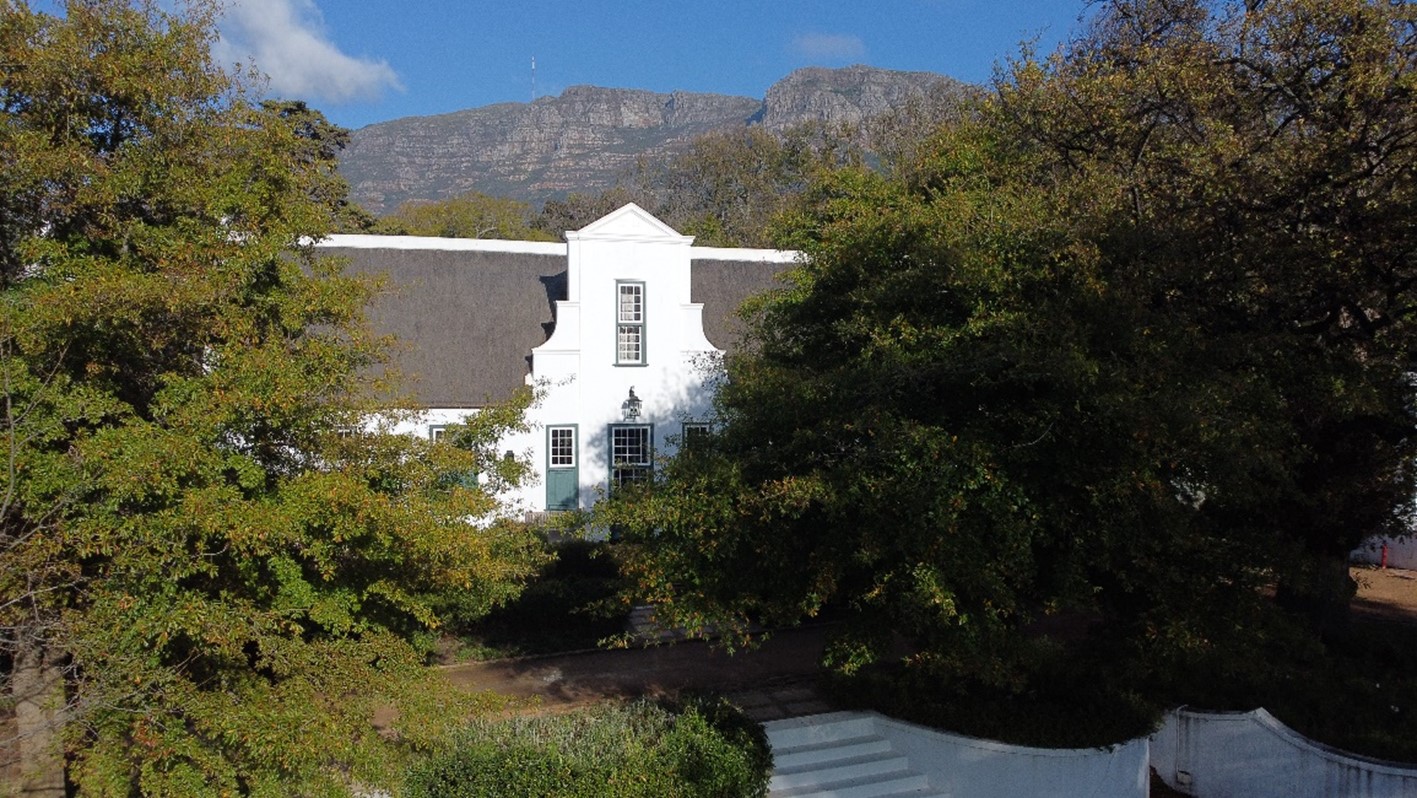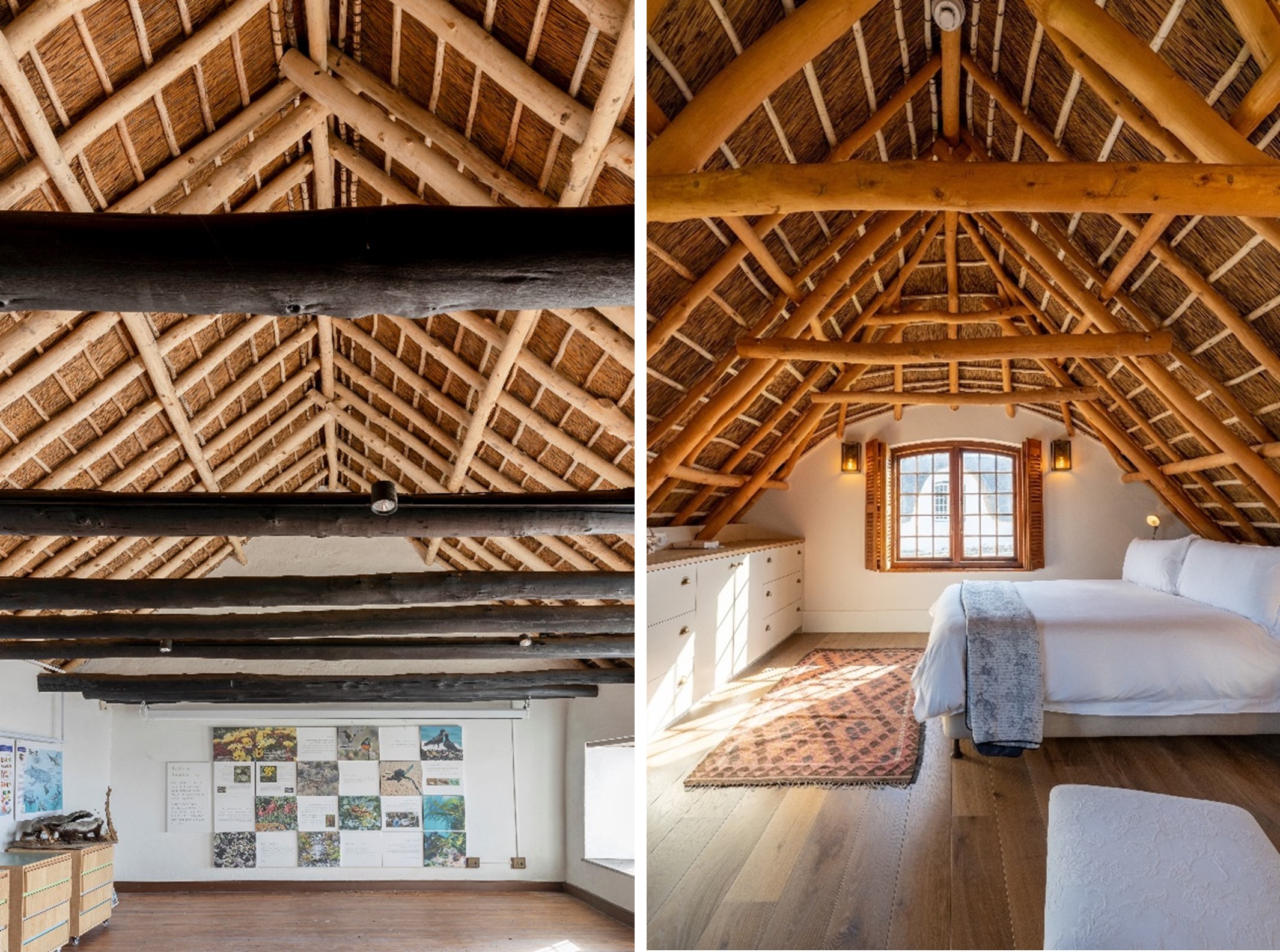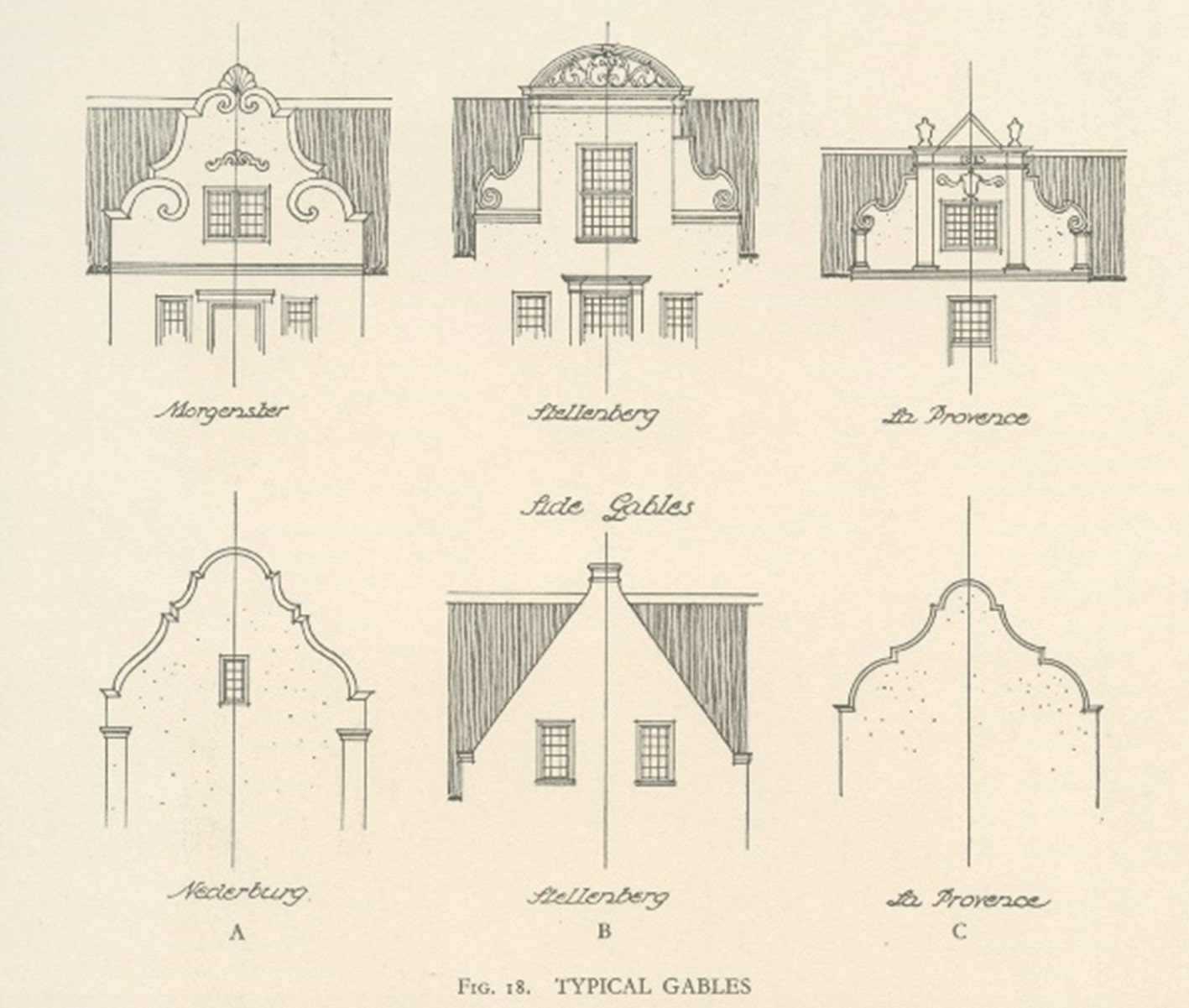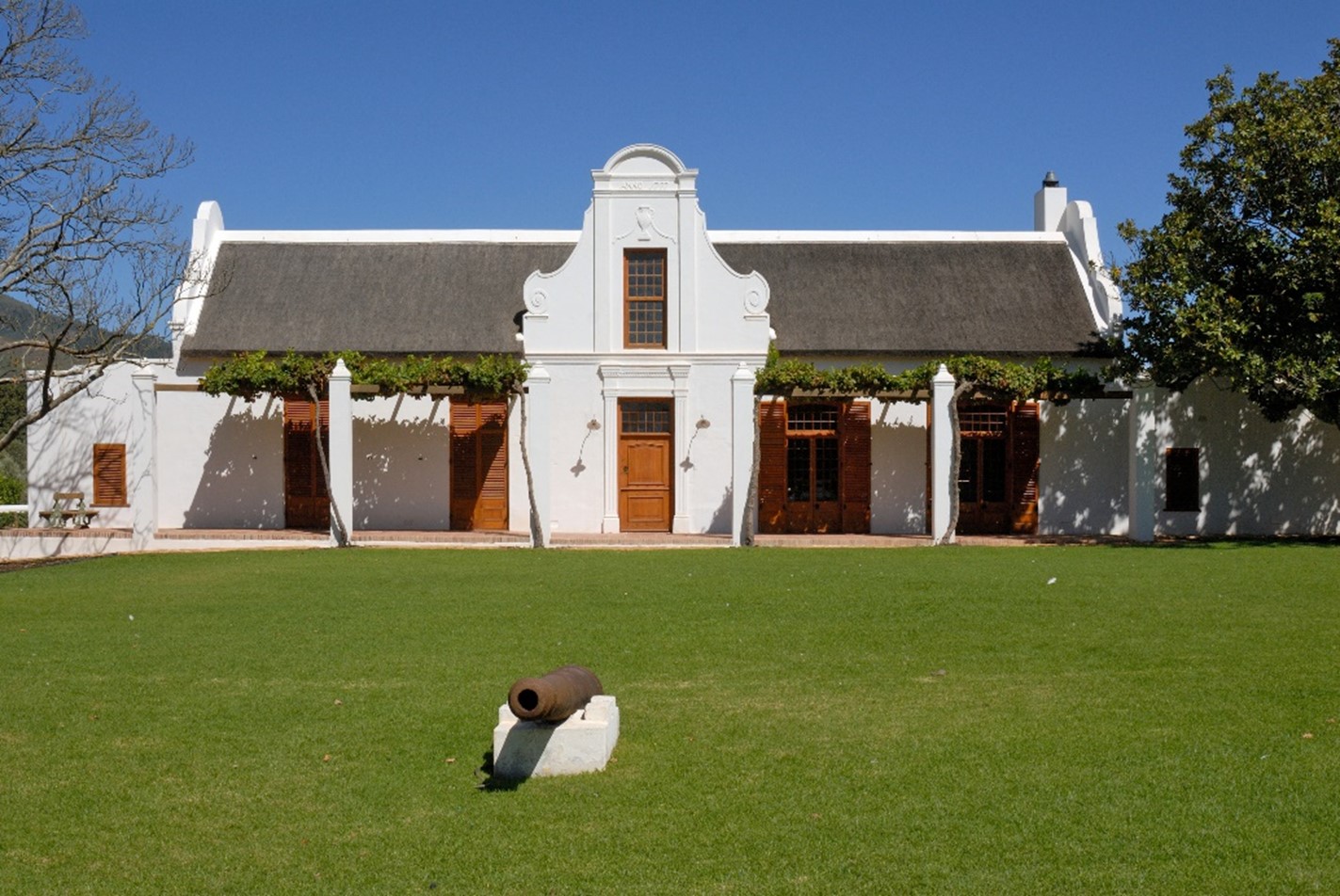Preserving History: The Significance of Cape Dutch Gabled Houses
Cape Dutch gabled houses are architectural treasures that grace the landscape of South Africa, particularly in the Western Cape. These unique buildings are steeped in history and are a testament to the rich cultural heritage of the region. In this blog, we will delve into the heritage aspects of Cape Dutch gabled houses, focusing on their design elements, such as thatched roofs, roof structures and the significance of the gables. Each of these features tells a compelling story of the past, making these houses more than just bricks and mortar.
1. THATCHED ROOFS: A SYMBOL OF TRADITION

Manor House – Klein Constantia
Thatched roofs are an iconic feature of Cape Dutch gabled houses. These roofs are not merely aesthetic choices but hold deep cultural significance. Here’s why:
1.1. Historical roots
Thatched roofs have been used for centuries in the Western Cape due to their excellent insulation properties and availability of thatching materials. “Dekriet” or Thamnocortus Insignis, is still used today because it is the only thatching material that can be sustainably produced and is suitable for the Cape’s climate.
1.2. A connection to the land
Thatched roofs seamlessly blend with the natural surroundings, reflecting a harmonious relationship between architecture and nature. They symbolize the settlers’ connection to the land and their desire to adapt to local conditions.
2. ROOF STRUCTURE: CRAFTSMANSHIP IN POPLAR AND LEATHER

Examples of traditional Poplar roof structures were rebuilt in the same configuration as the original roofs. Modern ready-made bolts were used for assembly, and mock dowels were added to maintain an authentic appearance.
The roof structure of Cape Dutch gabled houses is a masterpiece of craftsmanship. Two notable aspects stand out:
2.1. Poplar roof structure
The use of poplar timber in the roof structure demonstrates the ingenuity of the builders. Poplar was readily available and known for its durability, making it a practical choice for supporting the heavy thatched roof.
2.2. Leather straps and wooden dowels
To secure the roof structure, leather straps or wooden dowels were often used. The straps were first soaked in water, then tied around the structured and left to dry in that position. Another option was the use of wooden dowels as connections, which often provided greater strength compared to leather straps.
3. BRANDSOLDER: DUTCH INGENUITY
The “brandsolder” which consisted of a timber or “spaansriet” ceiling covered in a plaster of clay or raw brick, acting as a fire break. This would ensure to prevent any burning thatch to light the ceiling on fire and prolong the destruction of the building for the inhabitants to escape.
4. GABLES: ARCHITECTURAL POETRY

Illustrating examples of the distinctive Cape Dutch gable designs found on various Manor Houses across the Boland estates. Image: From the book ‘Eighteenth century architecture in South Africa’ by Geoffrey Eastcott Pearse. Published by A.A. Balkema, Cape Town in 1933.
The gables of Cape Dutch houses are perhaps their most distinctive feature. Their significance goes beyond aesthetics:
4.1. Dutch Influence
The gables are reminiscent of the architectural styles from the Netherlands, where many early settlers originated. They serve as a tribute to the Dutch heritage of the builders.
4.2. Functionality
The main function of the gables was to create a safe exit route for the inhabitants of the house and to prevent any burning thatch to block the entrance. Side gables were there to prevent the fire from spreading to the neighbouring buildings.
4.3. Symbolism
Gables initially served a purely functional role, but architects soon began to develop specific gable designs that would later become popular design shapes. Different styles, such as Neo-Classical and Baroque designs, became the distinctive identity of each household and estate to which these buildings belonged.

Manor House – Babylonstoren
In conclusion, Cape Dutch gabled houses are not just architectural marvels; they are living repositories of history, culture, and craftsmanship. The thatched roofs, roof structures, gables, and “brandsolders” all contribute to the rich heritage associated with these houses. Preserving these unique features is not just about conserving buildings but also safeguarding the stories and traditions they represent. As we admire these structures, let us also appreciate the profound significance they hold in South Africa’s cultural tapestry and architectural value.



